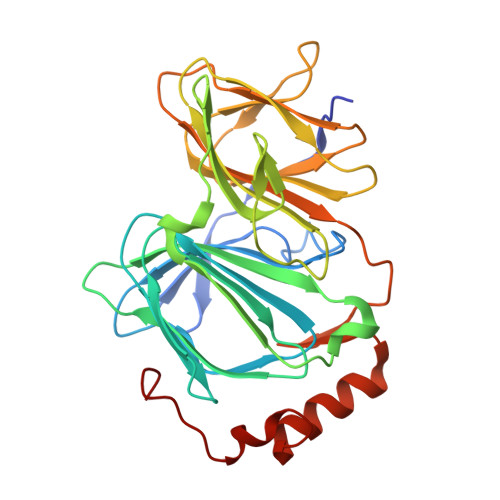Privileged Structures and Polypharmacology within and between Protein Families.
Meyers, J., Chessum, N.E.A., Ali, S., Mok, N.Y., Wilding, B., Pasqua, A.E., Rowlands, M., Tucker, M.J., Evans, L.E., Rye, C.S., O'Fee, L., Le Bihan, Y.V., Burke, R., Carter, M., Workman, P., Blagg, J., Brown, N., van Montfort, R.L.M., Jones, K., Cheeseman, M.D.(2018) ACS Med Chem Lett 9: 1199-1204
- PubMed: 30613326
- DOI: https://doi.org/10.1021/acsmedchemlett.8b00364
- Primary Citation of Related Structures:
6H1H, 6H1I - PubMed Abstract:
Polypharmacology is often a key contributor to the efficacy of a drug, but is also a potential risk. We investigated two hits discovered via a cell-based phenotypic screen, the CDK9 inhibitor CCT250006 ( 1 ) and the pirin ligand CCT245232 ( 2 ), to establish methodology to elucidate their secondary protein targets. Using computational pocket-based analysis, we discovered intrafamily polypharmacology for our kinase inhibitor, despite little overall sequence identity. The interfamily polypharmacology of 2 with B-Raf was used to discover a novel pirin ligand from a very small but privileged compound library despite no apparent ligand or binding site similarity. Our data demonstrates that in areas of drug discovery where intrafamily polypharmacology is often an issue, ligand dissimilarity cannot necessarily be used to assume different off-target profiles and that understanding interfamily polypharmacology will be important in the future to reduce the risk of idiopathic toxicity and in the design of screening libraries.
Organizational Affiliation:
Cancer Research UK Cancer Therapeutics Unit and Division of Structural Biology, The Institute of Cancer Research, London SW7 3RP, United Kingdom.


















